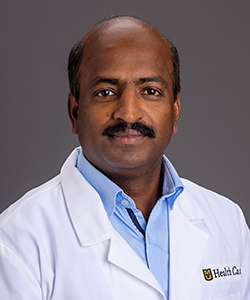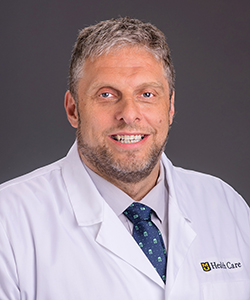
Researchers from the University of Missouri School of Medicine have found potential treatments for two different types of a common complication following bone marrow transplantation.
A bone marrow transplant is a potentially curative treatment for leukemia and other blood cancers where a type of stem cell is transplanted from a donor into the patient. However, a common complication for bone marrow transplants is called graft vs. host disease (GvHD) where the donated cells view the recipient’s cells as an unfamiliar threat and attack.
Acute GvHD happens shortly after a transplant and often affects the skin, intestines or liver. Chronic GvHD can happen any time after transplantation and typically affects the skin, mouth, lungs, intestines, muscles or joints.

In one recent study, an MU research team gave mice undergoing bone marrow transplantation a drug called Defibrotide, which is usually used to treat blocked blood vessels in the liver. They found the drug protected the cells that line the blood vessels, which are typically damaged in patients with acute GvHD.
“Treatment with Defibrotide resulted in significantly better survival with reduced acute GvHD,” said Senthilnathan Palaniyandi, PhD, an assistant professor at the University of Missouri School of Medicine. “Through its anti-inflammatory and endothelial protective effects, this treatment reduced the severity of acute GvHD while not impairing the transplanted immune cells fighting against the leukemia.”
In a separate study, the research team targeted chronic GvHD. They found that introducing different types of BTK/ITK kinase inhibitors reduced the severity of chronic GvHD and increased survival in mice.

“We found a combination kinase inhibitor to be effective for skin disease from chronic GVHD ” said Gerhard Hildebrandt, MD, Division Chief, Hematology and Medical Oncology at the University of Missouri School of Medicine and Director of MU Health Care’s Ellis Fischel Cancer Center. “Mice treated with the combination kinase inhibitor showed significant reduction in chronic complications associated with bone marrow transplantation.”
These findings reveal that a drug that protects the cells that line the blood vessels shows effectiveness in reducing acute GvHD and that kinase inhibition shows promise as a treatment for chronic GvHD.
“Increasing our understanding of how to manage GvHD is essential to clinically effective bone marrow transplantation at our Ellis Fischel Cancer Center and elsewhere globally,” said Hildebrandt. “Our lab is one of just a small number focused intently on solving the puzzle of GVHD to make bone marrow transplantation more effective and demonstrates the University of Missouri Health System’s commitment to advancing research and to saving and improving lives.”
As the region’s leading academic health system, the University of Missouri is well situated to lead on cancer research with the Roy Blunt Precision Health Building and the Ellis Fischel Cancer Center bridging laboratory and clinical research together on one clinical campus.
Role of Defibrotide in the Prevention of Murine Model Graft-versus-Host Disease after Allogeneic Hematopoietic Cell Transplantation was published in Transplantation and Cellular Therapy. Combinatorial inhibition of Tec kinases BTK and ITK is beneficial in ameliorating murine sclerodermatous chronic graft versus host disease was published in Bone Marrow Transplantation.

Highlighting the promise of personalized health care and the impact of large-scale interdisciplinary collaboration, the NextGen Precision Health initiative is bringing together innovators from across the University of Missouri and the UM System’s three other research universities in pursuit of life-changing precision health advancements. It’s a collaborative effort to leverage the research strengths of Mizzou toward a better future for the health of Missourians and beyond. The Roy Blunt NextGen Precision Health building at MU anchors the overall initiative and expands collaboration between researchers, clinicians and industry partners in the state-of-the-art research facility.





